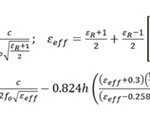A couple of differences may exist between the CPE and device specifications the alleged targets. The differences are mainly due to two factors not normally thought of in the design process.
• Works in Los scattering
• Not optimal positioning of CPE
When the RF design it is important to understand the characteristics of the antenna CPE and CPE will be located. If CPE is using the antenna and installed in the environment-Los, then including adjustment Antenna gain, orientation, and log normal margin may be required.
Antenna gain correction factor is to reduce the antenna gain of the Installing the antenna in the diaspora without line of sight. “Get paper cuts through the ways wireless of scatter with directional antennas with” provides equations which can be used to approximate the antenna gain correction the mean and standard deviation values.
Antenna loss of orientation is the performance of the antenna antenna, not looking in the right direction. Usually a loss of orientation not applicable to the design, which uses the device with one very aerial, as this assume that the antenna will be located optimally for the best website for serving.
The loss of orientation must be included in the RF design if:
- • Randomly set (which is not optimally placed to insure orientation for maximum performance).
- • The device is not fixed to the install location (i.e., the device can be rotated or moved).
- • RF environment can change.
- • New sites added that could change the optimum orientation
- • New construction or changes in the foliage, which can alter the optimal orientation
- • Changes in the nearby obstacles (e.g., people, furniture, etc.)
Understanding CPE Antenna Variations in LTE
When we talk about CPE (Customer Premises Equipment) antenna variations in LTE, we’re referring to how different types of antennas affect the performance and coverage of LTE services. The CPE antenna can vary in design, including different orientations, gains, and frequency bands, which directly influence signal strength and data speeds. For example, a high-gain antenna will focus the signal more effectively, improving range but possibly reducing the coverage area at certain angles. This is important when choosing the right antenna for optimal LTE performance in specific environments.


